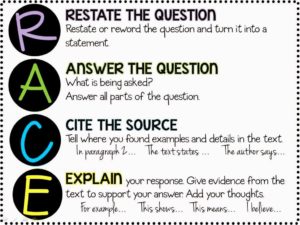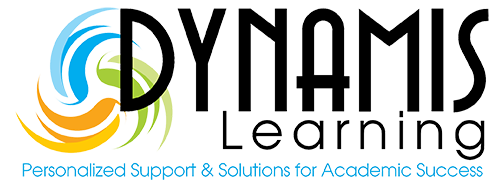 Well, it’s that time again, the written portion of the standardized test. You’ve had a hard time with these types of questions before, so you have little confidence this time will be any different. But, wait! Here’s an acronym and formula that, not only can you remember easily, but it will help you with constructed response questions on standardized tests and college entry exams.
Well, it’s that time again, the written portion of the standardized test. You’ve had a hard time with these types of questions before, so you have little confidence this time will be any different. But, wait! Here’s an acronym and formula that, not only can you remember easily, but it will help you with constructed response questions on standardized tests and college entry exams.
What is a constructed response question, you might ask? It’s a type of open-ended question that requires you demonstrate reasoning and critical thinking skills and is based on a passage or specific essay prompt. These are very similar to what we used to refer to as essay questions, as they involve a written response, but they do delve a bit deeper. If you can remember the word, RACE, then you will be on your way to conquering this particular portion of the standardized test. In general, RACE stands for Reword, Answer, Cite and Explain. This is a simple and easily applied blueprint for making sure you are answering the questions fully.
First, the R stands for ‘restate’. This tells you to make sure you are restating the question as part of the answer in your introductory paragraph. You are to make the question into a statement. For example, let’s say you are asked, “How tall is the Statue of Liberty?” You needTest Taking to make sure to utilize this question as part of your answer. Here’s a possible beginning. “The Statue of Liberty is 305 feet tall.” Note that we have not just said, “305 feet tall”, but have made sure to use the essential parts of the original question and turned them into a statement.
Next, the A stands for ‘answer’. This indicates we need to make sure we have fully answered the original question and all its parts. Some questions contain more than one section. For example, “How tall is the Statue of Liberty and how did America come to own it?” Here, we would make sure to reword the question and answer all of its parts. This may take more than one sentence. An appropriate  answer for this question would look something like this. “The Statue of Liberty is 305 feet tall. It was given to us by the French government as a gift of friendship in 1885.”
answer for this question would look something like this. “The Statue of Liberty is 305 feet tall. It was given to us by the French government as a gift of friendship in 1885.”
Our third letter, C, stands for ‘cite’. This means we need to be sure to formally mention where we received our information and give the original author(s) credit for their research or ideas. Here, the intention is to determine your comprehension of the question and show that you can use details from your readings to support your answer. For our Statue of Liberty question, we might use a quote from our reading to reinforce that our answer is correct.
 Finally, the E stands for ‘explain’. So, in addition to using the evidence you cited from your source, you need to explain your reasoning and how that makes your answer correct. Using our Statue of Liberty question, we may have used a quote from our reading to support our answer, but need to further clarify. We may, in this case, talk about why the French people might have wanted to give us such a large gift of friendship by talking about what we know about the happenings of that time period.
Finally, the E stands for ‘explain’. So, in addition to using the evidence you cited from your source, you need to explain your reasoning and how that makes your answer correct. Using our Statue of Liberty question, we may have used a quote from our reading to support our answer, but need to further clarify. We may, in this case, talk about why the French people might have wanted to give us such a large gift of friendship by talking about what we know about the happenings of that time period.
In utilizing this one acronym, you have made sure to include all the vital elements of a good answer. You restate the question into an answer statement, make sure to answer all parts of the question, cite supporting evidence, and explain your reasoning based on this evidence. Do these things and chances are you’re going to do just fine. That mountain you thought you had to climb really turned out to be a small hill, easily scaled with a little gear.
Click the image below to get our list of 4 test-taking strategies that can help your children do well on normed referenced tests and tests in the classroom. Every week, I will be discussing each of these four in detail.
